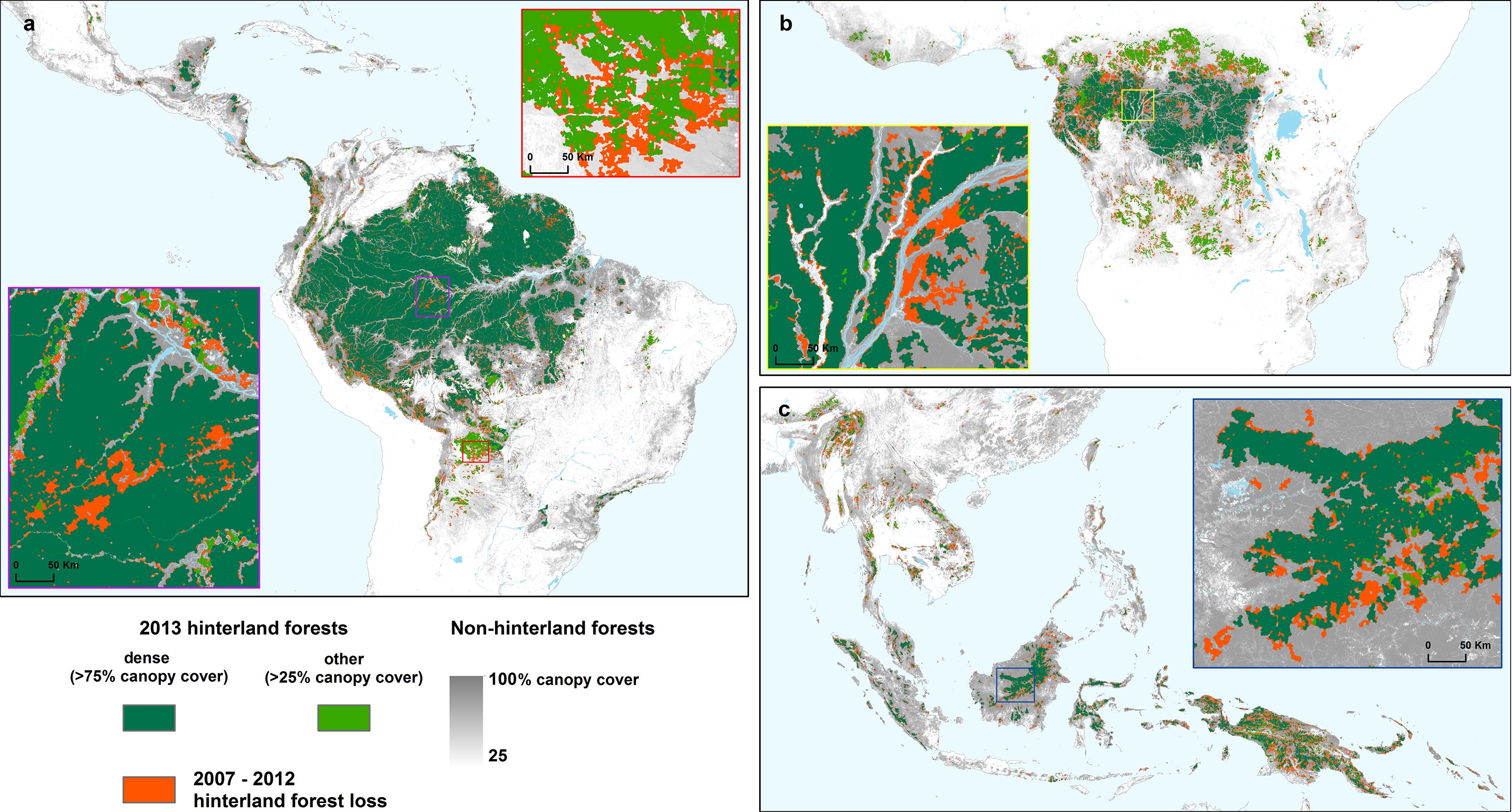Post-doctoral researcher Alexandra Tyukavina, in collaboration with Professors Matthew Hansen and Peter Potatov, remote sensing scientist Alexander Krylov and Dr. Scott Goetz of the Woods Hole Research Center, published a new method to indirectly map tropical forest degradation. The method is based on the identification of recently undisturbed and unfragmented (hinterland) forests. Lidar-modelled forest height data were shown to be different within and outside hinterland forests, demonstrating the biophysical basis of the hinterland concept in discriminating likely degradation.
Analysis of hinterland forest dynamics between 2007 and 2013 revealed an 18% decline in hinterland forest area pan-tropically. The highest rates of tropical forest degradation were observed in Southeast Asia, followed by Africa and Latin America. The most intact tropical hinterland forests were found in the north-east coast of South America, within Suriname, Guyana and French Guiana.
The method and the findings were published in Global Ecology and Biogeography: http://onlinelibrary.wiley.com/doi/10.1111/geb.12394/full
Data on 2013 pan-tropical hinterland forest extent can be downloaded from http://glad.geog.umd.edu/hinterland/index.html and viewed online at http://earthenginepartners.appspot.com/science-2013-global-forest.
Figure. Forest degradation (2007–2012). (a) Latin America; purple/rectangular inset, Urucu natural gas field, Amazonas, Brazil (in detail bottom left); red/rectangular inset, Chaco woodlands large-scale agricultural clearing, Santa Cruz, Bolivia and Boqueron and Alto Paraguay, Paraguay (in detail top right). (b) Africa; inset, smallholder-dominated agriculture, Likuoala, Republic of Congo and Equateur, Democratic Republic of Congo. (c) Southeast Asia: inset, logging in Central Kalimantan, Indonesia and Sarawak, Malaysia.


